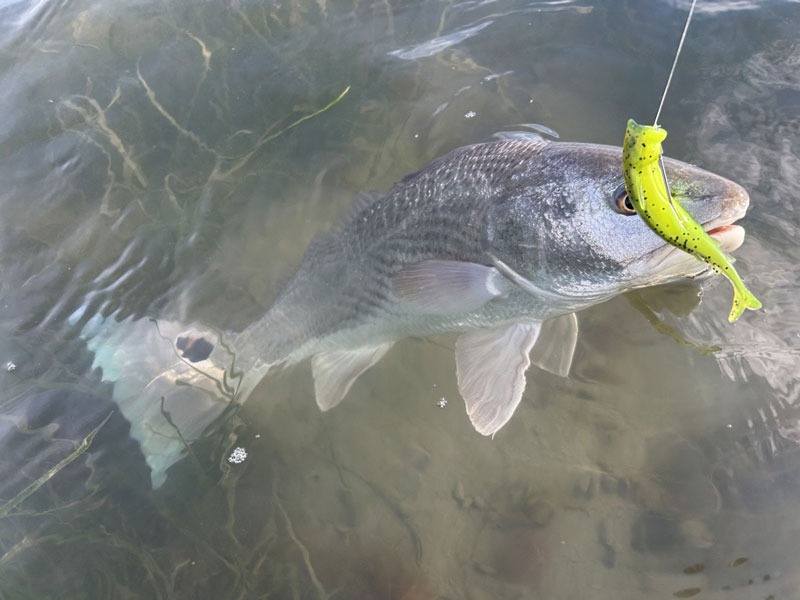There aren’t many experiences on the water as exciting as watching a fish engulf your topwater lure in a few feet of water. As luck would have it for those of us who dream big while captaining small boats, kayaks are the perfect vessel for sight-casting. Let’s look at seven tips that will maximize your success on the water.

- Slow and Steady Wins the Race -The biggest advantage to being in a kayak is stealth, but if you push through a flat or cove without plenty of patience all you’ll end up seeing is mud clouds and the tail end of a very scared fish. Once you’ve reached the area you want to fish, simply let yourself drift in the breeze or current and make small adjustments with your paddle. If you’re having trouble locating fish pick up your pace. Once you’ve located a productive area, move as slowly as possible. Often the fish will end up swimming right in front of you.
- Stand up Before you Get to your Spot or Stay Seated - Changing your position vertically is the easiest way to spook a fish while sight-casting, be it a slot redfish or a snakehead. If you haven’t stood up yet and you see fish, stay seated and make your cast. Sighting fish while seated is doable if you have decent water clarity and a good pair of sunglasses. I know I’d rather fish with a disadvantage, rather than stand up and get treated with mud clouds as spooked fish dart off.
- Use Short Rods - The amount of fish that you’ll hook within a few feet of the kayak is shocking, and making a very short, precise cast isn’t easy if the fish aren’t much further from you than your rods’ length. My favorite rods for the task are 6’3” and 6’6”. Having around a foot of extra room to work with makes a significant difference, and also makes life easier on a kayak in most situations.
- Fish Smaller Baits - Sight fishing generally means fishing shallow and using some finesse, unless you’re targeting fish like cobia. Smaller baits that won’t create a big splash and spook fish are essential. When targeting redfish or juvenile stripers, it’s generally a good move to throw baits in the three- to four-inch range. Straight tails are good choices because they create less of a splash and look more natural while resting, drawing more strikes on the pause. Try topwater, too, because a well-placed cast with a topwater lure usually won’t scare the fish and will draw some epic boatside eats.
- Cast Underhand or From the Side - Overhand casts are more likely to spook fish because generally the lure will fly higher in the air and then make a bigger splash-down. In an ideal situation get as close as you comfortably can, and make a soft underhand cast a few feet past and in front of the fish.
- Follow Spooked Schools - If you spook a school it’s not always the end of the world. Pay attention to what direction they went in, and immediately follow up with a cast. More often than not you can still draw a strike. If you don’t, slowly head in the direction you saw them shoot off in. Many fish will make a quick burst off in one direction, then slow down and continue to feed or start circling back. If you don’t find them where they swam off to swing back to where you originally spooked them.
- Keep the Sun Behind You -This isn’t always possible given the wind, tides, and cloud cover, but do your best to keep the sun at your back. This will give you the best visibility through the water with the least glare. A nice pair of sunglasses is essential. For fishing the Chesapeake, I prefer bronze glasses for the stained water in the northern Bay and blue or green for the clearer, emerald water down south.
-By David Rudow